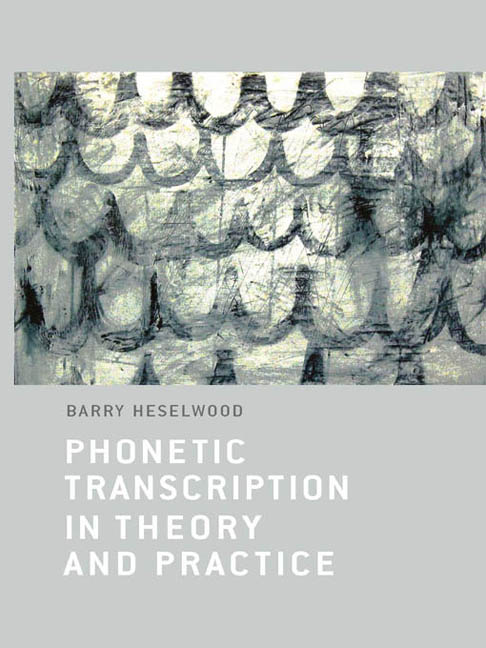Book contents
- Frontmatter
- Contents
- List of Tables
- List of Figures
- Preface
- Acknowledgements
- Introduction
- 1 Theoretical Preliminaries to Phonetic Notation and Transcription
- 2 Origins and Development of Phonetic Transcription
- 3 Phonetic Notation
- 4 Types of Transcription
- 5 Narrow Impressionistic Phonetic Transcription
- 6 Phonetic Transcription in Relation to Instrumental and Other Records
- 7 Uses of Phonetic Transcription
- Glossary
- References
- Appendix: Phonetic Notation Charts
- Index
Introduction
Published online by Cambridge University Press: 07 December 2017
- Frontmatter
- Contents
- List of Tables
- List of Figures
- Preface
- Acknowledgements
- Introduction
- 1 Theoretical Preliminaries to Phonetic Notation and Transcription
- 2 Origins and Development of Phonetic Transcription
- 3 Phonetic Notation
- 4 Types of Transcription
- 5 Narrow Impressionistic Phonetic Transcription
- 6 Phonetic Transcription in Relation to Instrumental and Other Records
- 7 Uses of Phonetic Transcription
- Glossary
- References
- Appendix: Phonetic Notation Charts
- Index
Summary
Phonetic transcription is concerned with how the sounds used in spoken language are represented in written form. The medium of sound and the medium of writing are of course very different, having absolutely no common forms or substance whatsoever, but over the ages people have found ways to represent sounds using written symbols of one kind or another, ways that have been more or less successful for their purposes. This book aims to explore the history and development of phonetic transcription as a particular example of technographic writing and to examine critically the problems attending its theory and practice. A good many academic books include ‘theory and practice’ in their title, and I offer no apology for doing so in a work on phonetic transcription. Theory and practice have shaped the resources for transcription by pulling often in contrary directions through obedience to different priorities. Theory, being concerned with the logic and consistency of category construction, has made many attempts to impose itself on the design of phonetic notation systems, but practice has almost always rebelled, finding the demands of theory too inflexible and too forgetful of the practical need to make and read transcriptions with a minimum of difficulty. The failure of many proposed notation systems has illustrated that the only valid test for a notation is ‘practice, not abstract logical principles’ (Abercrombie 1965: 91). It is in phonetic transcription that theory and practice have to make compromises – practice must not ignore the rigour of theory or it will lose its accuracy of expression, and theory cannot afford to overlook the needs and constraints of practice or practitioners will lose patience with it. It might be objected that I have over-theorised in places, that we can get by perfectly well using symbols as imitation labels with attached definitions and be guided by professional intuition, but if we are to understand what we are really doing with notations and transcriptions and be able to justify them, then we do need to expose their theoretical foundations to critical scrutiny, and strengthen them if need be. It is as well to understand the tools of one's trade conceptually and structurally if one can.
- Type
- Chapter
- Information
- Phonetic Transcription in Theory and Practice , pp. 1 - 4Publisher: Edinburgh University PressPrint publication year: 2013



